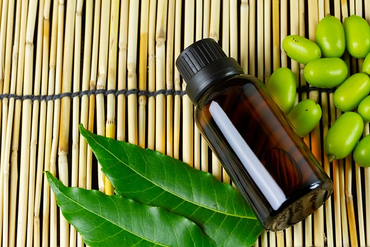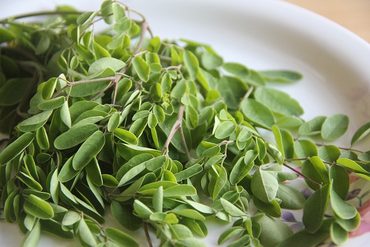
To body oil or to lotion? That is the question! Both are wonderfully moisturizing products that the skin soaks up for a hydrating glow.
While both have their own unique pros and drawbacks, this comprehensive article will explore the differences between body oil and lotion, when to use each, and how to layer them for optimal results. We will even share a few Shankara suggestions to enhance your routine!
But before we jump into the details, why not start with a personalized recommendation? Take our quick interactive quiz below to discover whether body oil or lotion might be the better choice for your skin type and preferences.
1. How would you describe your skin type?
2. What's your preferred texture for skincare products?
3. Do you have sensitive skin?
4. What's your main skincare concern?
With your personalized recommendation in hand, let's explore body oils and lotions. Ready to become a body moisturizing expert? Let's dive in!
Body oils and lotions are both designed to moisturize and nourish your skin, but they do so in different ways. Let's explore their key characteristics:
Body oil is a skincare product composed primarily of natural or synthetic oils. These oils are similar to the natural sebum produced by your skin, which makes them highly compatible with your body's biology.
Key features:
Made from plant-based oils (e.g., jojoba, almond, coconut)
Deeply penetrates the skin
Creates a protective moisture barrier
Highly concentrated with little to no water
Ideal for dry or mature skin types
Body lotion is a moisturizing product that combines water and oils, along with other ingredients like emollients, humectants, and occasionally, active ingredients for specific skin concerns.
Key features:
Water-based with a mix of oils and emollients
Absorbs quickly without residue
Adds and retains moisture
Available in various formulations for different skin types
Suitable for most skin types, especially normal to slightly dry skin
Are you unsure of your skin type? Click here to complete our Skin Quiz to determine what type of skin you’re working with!
Now that we've explored the characteristics of both body oils and lotions, let's visually compare how these products interact with your skin:
As shown in the diagram, body oils (left) penetrate deeper into the skin layers, providing nourishment from within. The yellow gradient represents how oils can reach the dermis. Body lotions (right), represented by the blue layer, tend to work more on the skin barrier at the surface, creating a protective barrier and providing hydration primarily to the outer layer of skin.
Let's take a moment to learn about the composition of body oil and lotion, so we can understand the difference:
Green (90%): Natural oils (e.g., jojoba, almond, coconut)
Light Blue (10%): Additives (e.g., essential oils, vitamins)
Body oils are primarily composed of natural oils, with a small percentage of additives for fragrance or additional benefits.
Light Blue (70%): Water
Green (20%): Oils and emollients
Dark Blue (10%): Additives (e.g., preservatives, fragrances, active ingredients)
Body lotions have a water-based formula, with oils and emollients for moisturizing, and a small percentage of additives for preservation and enhanced benefits.
Explore the key differences between body oil and body lotion in this interactive comparison table. Click on any feature to learn more!
| Feature | Body Oil | Body Lotion |
|---|---|---|
| Consistency |
Rich, oily
Body oils have a smooth, silky texture that glides over the skin.
|
Lightweight, creamy
Lotions have a lighter, more fluid consistency that's easy to spread.
|
| Absorption |
Slower, deeply penetrating
Oils take longer to absorb but penetrate deeper into the skin layers.
|
Quick, surface-level
Lotions are quickly absorbed, providing immediate surface hydration.
|
| Hydration Level |
Deep, long-lasting
Oils provide intense hydration that can last for many hours.
|
Moderate, may require reapplication
Lotions offer good hydration but may need to be reapplied throughout the day.
|
| Best for Skin Types |
Dry, mature, sensitive
Oils are excellent for very dry skin and can help with signs of aging.
|
Normal, combination, oily
Lotions are versatile and work well for most skin types, including oily skin.
|
| Application |
Best on damp skin after shower
Applying oil to damp skin helps lock in moisture and improves absorption.
|
Can be applied anytime
Lotions can be easily applied throughout the day as needed.
|
Your choice between body oil and lotion will depend on your skin type, personal preferences, and specific skincare needs. Consider factors like your skin's moisture level, the climate you live in, and the time of day you'll be applying the product.
Incorporating body oil into your skincare routine can transform your skin in multiple ways. Let's explore the remarkable benefits this luxurious product offers:
Deep Hydration: Body oils penetrate deeply into the skin layers, providing long-lasting hydration and leaving the skin glowing and supple.
Rich Nourishment: Packed with essential fatty acids, vitamins, and antioxidants, body oils nourish the skin and improve its overall health.
Treatment Support: Helps in reducing the appearance of stretch marks, wrinkles, and scars.
Skin Firming: Aids in reducing signs of aging by firming the skin.
Relaxation: The application process is stress-free and allows for dedicated self-care time.
Natural Glow: Provides a beautiful, natural-looking glow to the skin.
Body lotions offer a range of advantages for your skin, making them a popular choice in daily skincare routines. Here's why many people love using body lotions:
Moisture Locking: This creates a barrier on the skin's surface, locking in moisture while protecting against environmental damage.
Lightweight Feel: Lotions have a light consistency, allowing for quick absorption without leaving a greasy residue. This makes them comfortable for all-day wear.
Versatility: Suitable for all skin types, including oily or combination skin and acne-prone skin, due to their balanced formulas.
Anti-aging Properties: Helps minimize signs of aging such as wrinkles, fine lines, and pigmentation.
Skin Softening: Treats and prevents dry, rough, scaly, and itchy skin, leaving it soft and supple.
Quick Application: Easy to apply and absorbs quickly, making it convenient for daily use. This speed and ease of use fit well into busy lifestyles.
Understanding when and how to apply these products can maximize their benefits. Let's explore the best practices for each:
Body oil is best applied in the following ways:
Apply body oil right after a shower, when the skin is damp for maximum absorption.
During massages to enhance the benefits.
To dry or rough areas for additional hydration.
Body lotion is best applied throughout the day, to maintain skin hydration.
For optimal results with body lotion:
Apply throughout the day to maintain skin hydration
Focus on drier areas like hands, elbows, knees, and neck
Gently exfoliate these areas before application for better absorption
For hand care, use a specially formulated hand lotion to combat increased exposure extremely dry skin to pollutants.
Why choose between the two!?
It's possible to layer body oil and body lotion to double their benefits, and offer superior hydration and nourishment. To do so:
Cleanse: Start with clean skin.
Pat Dry: Pat your skin dry with a towel, leaving it slightly damp.
Apply Lotion: With slightly damp skin, apply body lotion generously over the body.
Apply Body Oil: Allow the lotion to absorb into the skin, then apply body oil by massaging it into your skin in circular motions.
The application order of lotion and oil matters as the order can impact their effectiveness.
With skin care in general, the golden rule is to apply products from lightest to heaviest. With that in mind, apply lotion first to lock in moisture. Then, lather on body oil to seal in the intense hydration for a bonus bit of nourishment.
Choosing between body oil and lotion depends on several factors. Let's explore what to consider:
When picking between body oil and lotion:
Skin type: Knowing your skin type is important. Dry or mature skin can benefit best more from the deep hydration provided by body oils. Oppositely, normal to oily skin types often prefer the lightweight, quick absorption of lotions.
Personal preferences: If you prefer products that absorb quickly and leave no residue, a lotion might be best. For luxurious, intensive hydration, body oils may be enjoyed more.
The Season: One should always adjust your skin care routine based on the seasons. Body oils are great in winter and throughout colder months when skin tends to be drier. With hot weather, a lighter lotion can hydrate sufficiently without being overly heavy on the skin.
Use this handy tool below to get seasonal recommendations for your routine:
Here's a handy table you can use for selecting products based on your skin type:
| Skin Type | Recommended Product | Key Ingredients |
|---|---|---|
| Dry | Rich body oils or heavy, oil-based lotions | Shea butter, cocoa butter, jojoba oil |
| Oily | Lightweight, water-based lotions | Non-comedogenic formulas |
| Combination | Lotions overall, targeted oil application | Gel-based products |
| Sensitive | Fragrance-free, hypoallergenic options | Calendula, chamomile |
| Mature | Rich body oils or anti-aging lotions | Retinol, vitamin C, peptides |
Remember, skin needs can change. Listen to your skin and adjust your choices accordingly.
Shankara Naturals products are derived from 100% natural ingredients, offering nourishment and hydration that will make your skin healthy and happy.
Harmonizing Body Oil is a luxurious blend of potent herbs and essential oils that will uplift, balance, and nurture your skin.
Sundarya Body Oil is a sumptuous body oil, rich in floral essential oils, that nurtures and moisturizes, offering an uplifting feeling.
Calming Body Oil is full of nutrients, antioxidants, and moisturizing ingredients that soothe the senses, and calm emotions while nourishing your skin.
Hydrating Body Silk is a wonderfully hydrating body lotion, full of nutrients and antioxidants, which is calming while giving relief to sensitive and irritated skin.
Rich Repair Moisturizer is a lavish, silky moisturizer, packed with antioxidants to deeply nourish and hydrate dry, flaky skin while supporting natural renewal and providing sun protection.
Balance Moisturizer is nutrient-dense, with green tea and bitter orange to restore and maintain skin balance.
It's a common confusion, as sometimes body lotion and moisturizer are interchangeable. While body lotion and moisturizer are similar, they are not completely the same. Both are used to nourish the skin, but they have different uses and formulas.
Body lotion is a moisturizer for use on the body. It typically has a lighter consistency and is quickly absorbed, making it suitable for everyday use on larger areas of the skin.
Moisturizer is actually a general term for products that will hydrate the skin. Moisturizers are available in all sorts of variations, including creams, gels, ointments, and lotions. Some are even made specifically with formulas that address different parts of the skin's moisture barrier on the body, such as the face, hands, or body, and can address specific skin concerns.
So, most body lotions are moisturizers, but not all moisturizers are body lotions!
Apply to damp skin for better absorption
Use circular motions to improve circulation
Allow products to fully absorb before dressing
Apply heavier products at night for deep nourishment
Remember to tailor your application technique to your skin's needs. For example, those with sensitive skin should use gentler motions, while those targeting cellulite might use firmer pressure.
| Mistake | Why It's a Problem | How to Correct It |
|---|---|---|
| Applying too much product | Wastes product and can leave skin feeling greasy | Start with a small amount and add more if needed |
| Using the wrong product for your skin type | Can lead to skin issues or reduced effectiveness | Choose products based on your skin type and concerns |
| Neglecting to exfoliate | Reduces product absorption and efficacy | Incorporate gentle exfoliation into your routine |
| Inconsistent application | Prevents achieving optimal, long-term results | Establish a consistent skincare routine |
By avoiding these common mistakes and following best practices, you can significantly enhance the benefits of your body oils and lotions, leading to healthier, more nourished skin.
Ultimately, between body oil or body lotion, it all depends on your skin type, personal preferences, and the specific benefits you're looking to get out of your skin care routine. Both have significant advantages in effectively achieving healthy, hydrated skin, and experimenting with different products to see how your skin responds to each through a patch test can help you determine the best choice according to your skin care goals.
When you finally select a body oil, lotion, or a combination of both, your skin will thank you!
Do you incorporate body oil or lotion in your routine?













comments (0)